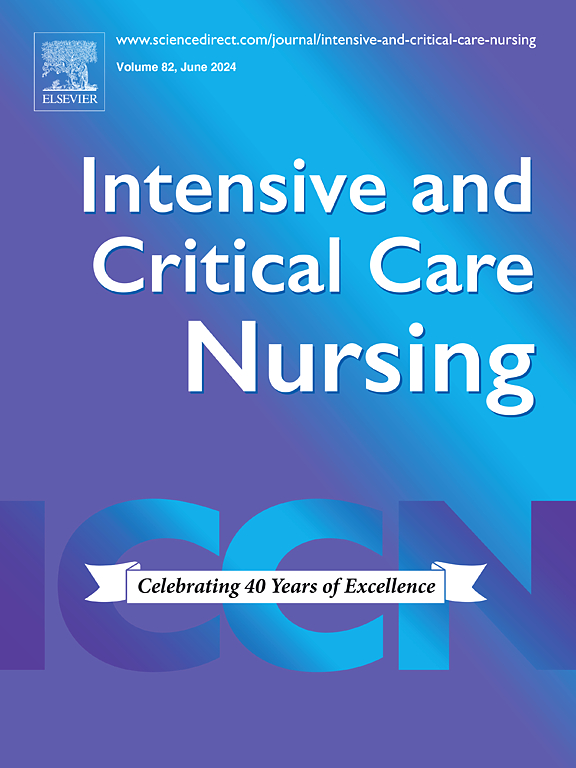Parents’ experience of being present or absent during anesthesia induction of children under six months of age. A mixed randomized controlled study
IF 4.7
2区 医学
Q1 NURSING
引用次数: 0
Abstract
Purpose
To investigate parents’ experiences of being present during anesthesia induction in young infants.
Design.
A mixed randomized controlled study.
Methods
Parents of the included infants were randomized to either one parent present during induction or control (not present). In the holding area, parents completed the Amsterdam Preoperative Anxiety and Information Scale (APAIS) before and after the induction. Differences in APAIS between groups as well as before and after scores were analyzed. Postoperatively, available parents were interviewed, and data were analysed using meaning-oriented thematic analysis.
Results
Pre-induction anxiety was common in both fathers (51 %) and mothers (73 %) but there was no difference in the full APAIS score between present and absent groups. However, the qualitative data revealed that parents preferred to be present despite different levels of anxiety. Being present was to gain certainty, to be able to protect and to be a resource. Being absent was to be floating in uncertainty, not being allowed to protect or to be a resource.
Conclusions
Pre-induction anxiety was common, especially in mothers. If given the choice, most parents would prefer to be present. Parents can be a resource for both the infant and anesthesia team during induction.
Implications for Clinical Practice
Setting up routines for parental presence during anesthesia induction is important. The parents’ message to the anesthesia team and to the organization is let the parents of small infants be present during induction.
6个月以下儿童麻醉诱导时父母在场或不在场的经历。一项混合随机对照研究
目的探讨婴幼儿麻醉诱导过程中家长在场的情况。设计:一项混合随机对照研究。方法纳入的婴儿的父母随机分为两组,一组在诱导时父母在场,另一组为对照组(不在场)。在等待区,家长在入组前后分别完成了阿姆斯特丹术前焦虑与信息量表(APAIS)。分析各组间APAIS评分及评分前后的差异。术后,对可用的家长进行访谈,并采用意义导向的主题分析对数据进行分析。结果诱导前焦虑在父亲(51%)和母亲(73%)中都很常见,但在出席组和缺席组之间APAIS总分没有差异。然而,定性数据显示,尽管焦虑程度不同,但父母更喜欢在场。在场是为了获得确定性,能够保护并成为一种资源。缺席意味着飘浮在不确定之中,不被允许保护或成为一种资源。结论诱导前焦虑是常见的,尤其是在母亲中。如果可以选择的话,大多数家长更愿意在场。在引产过程中,父母可以成为婴儿和麻醉团队的资源。对临床实践的启示:在麻醉诱导过程中,设置家长在场的常规是很重要的。父母给麻醉小组和组织的信息是让小婴儿的父母在引产过程中在场。
本文章由计算机程序翻译,如有差异,请以英文原文为准。
求助全文
约1分钟内获得全文
求助全文
来源期刊

Intensive and Critical Care Nursing
NURSING-
CiteScore
6.30
自引率
15.10%
发文量
144
审稿时长
57 days
期刊介绍:
The aims of Intensive and Critical Care Nursing are to promote excellence of care of critically ill patients by specialist nurses and their professional colleagues; to provide an international and interdisciplinary forum for the publication, dissemination and exchange of research findings, experience and ideas; to develop and enhance the knowledge, skills, attitudes and creative thinking essential to good critical care nursing practice. The journal publishes reviews, updates and feature articles in addition to original papers and significant preliminary communications. Articles may deal with any part of practice including relevant clinical, research, educational, psychological and technological aspects.
 求助内容:
求助内容: 应助结果提醒方式:
应助结果提醒方式:


